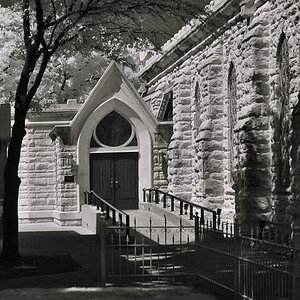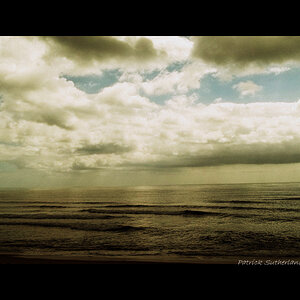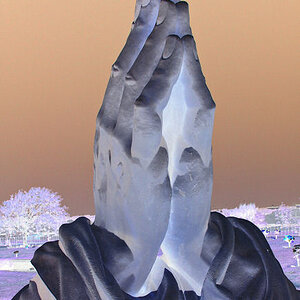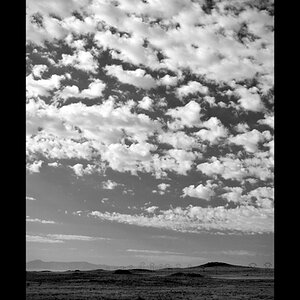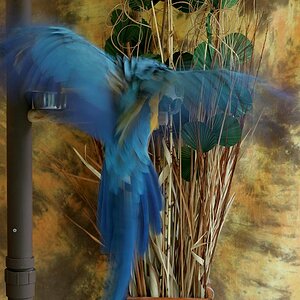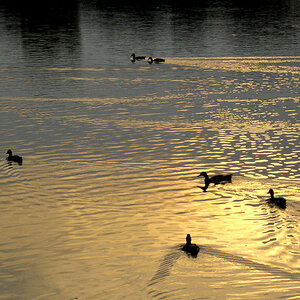unpopular
Been spending a lot of time on here!
Had to make a quiz for my production class. Thought I might share for discussion. Feel free to answer a few or ask questions about subjects you're unsure how to answer. Will post my answers later on.
1) Latitude refers to:
A) Exposure Range
B) Dynamic Range
C) How far into the shadows and highlight a camera can “see”
D) All of the above
2) Short answer: Explain why lighting for black and white films might be harder than color.
3) True or False: Shutter Speed and Frame Rate are the same?
4) Setting ISO or GAIN will:
A) Adjust the sensitivity of the sensor to light
B) Make the pixels effectively larger so that they can gather more light (similar to film grain)
C) Boost the signal after it is captured by the sensor, affecting dynamic range
5) True of False: Transfer rates are mostly bogus marketing ploys to buy expensive cards and are not necessary for shooting at high frame rates.
6) Short answer: Aside from making something far away seem closer, why else would you want to use a longer focal length over a shorter one?
7) An extremely small aperture will increase depth of field at the expense of:
A) The amount of light available to the sensor
B) Overall sharpness and resolving power
C) Both A and B
D) Neither, a small aperture will decrease depth of field
8) Short Answer: Finally, you've made it to the big screen. Unfortunately, things don't seem to look right in the theater. Things the you focused the camera appear sharp, but oddly, some elements in the foreground and background are not. What might explain this discrepancy?
9) The difference between f-stops and t-stops is that:
A) f-stops reflects the perfect lens, while the t-stops reflect the actual amount of light transmitted through the lens, which can differ significantly.
B) f-stops are calculated using the diameter of the front of the lens, t-stops are calculated using the rear diameter.
C) There is no difference. T-stops can be converted to f-stops using a simple formula.
10) The rate of light falloff is inversely ___________.
A) Exponential
B) Logarithmic
C) Linear
D) Determined by brightness
11) True or false: A lamp that consumes 600W of energy will always produce the same amount of light, regardless of type of bulb used.
12) “Silks” are used to:
A) Diffuse light
B) Direct light
C) Focus light
D) Are not used in lighting
13) Short Answer: Fill light is used to control shadows produced by the key. What ways might one accomplish this without having the fill casting it's own shadows?
1) Latitude refers to:
A) Exposure Range
B) Dynamic Range
C) How far into the shadows and highlight a camera can “see”
D) All of the above
2) Short answer: Explain why lighting for black and white films might be harder than color.
3) True or False: Shutter Speed and Frame Rate are the same?
4) Setting ISO or GAIN will:
A) Adjust the sensitivity of the sensor to light
B) Make the pixels effectively larger so that they can gather more light (similar to film grain)
C) Boost the signal after it is captured by the sensor, affecting dynamic range
5) True of False: Transfer rates are mostly bogus marketing ploys to buy expensive cards and are not necessary for shooting at high frame rates.
6) Short answer: Aside from making something far away seem closer, why else would you want to use a longer focal length over a shorter one?
7) An extremely small aperture will increase depth of field at the expense of:
A) The amount of light available to the sensor
B) Overall sharpness and resolving power
C) Both A and B
D) Neither, a small aperture will decrease depth of field
8) Short Answer: Finally, you've made it to the big screen. Unfortunately, things don't seem to look right in the theater. Things the you focused the camera appear sharp, but oddly, some elements in the foreground and background are not. What might explain this discrepancy?
9) The difference between f-stops and t-stops is that:
A) f-stops reflects the perfect lens, while the t-stops reflect the actual amount of light transmitted through the lens, which can differ significantly.
B) f-stops are calculated using the diameter of the front of the lens, t-stops are calculated using the rear diameter.
C) There is no difference. T-stops can be converted to f-stops using a simple formula.
10) The rate of light falloff is inversely ___________.
A) Exponential
B) Logarithmic
C) Linear
D) Determined by brightness
11) True or false: A lamp that consumes 600W of energy will always produce the same amount of light, regardless of type of bulb used.
12) “Silks” are used to:
A) Diffuse light
B) Direct light
C) Focus light
D) Are not used in lighting
13) Short Answer: Fill light is used to control shadows produced by the key. What ways might one accomplish this without having the fill casting it's own shadows?



